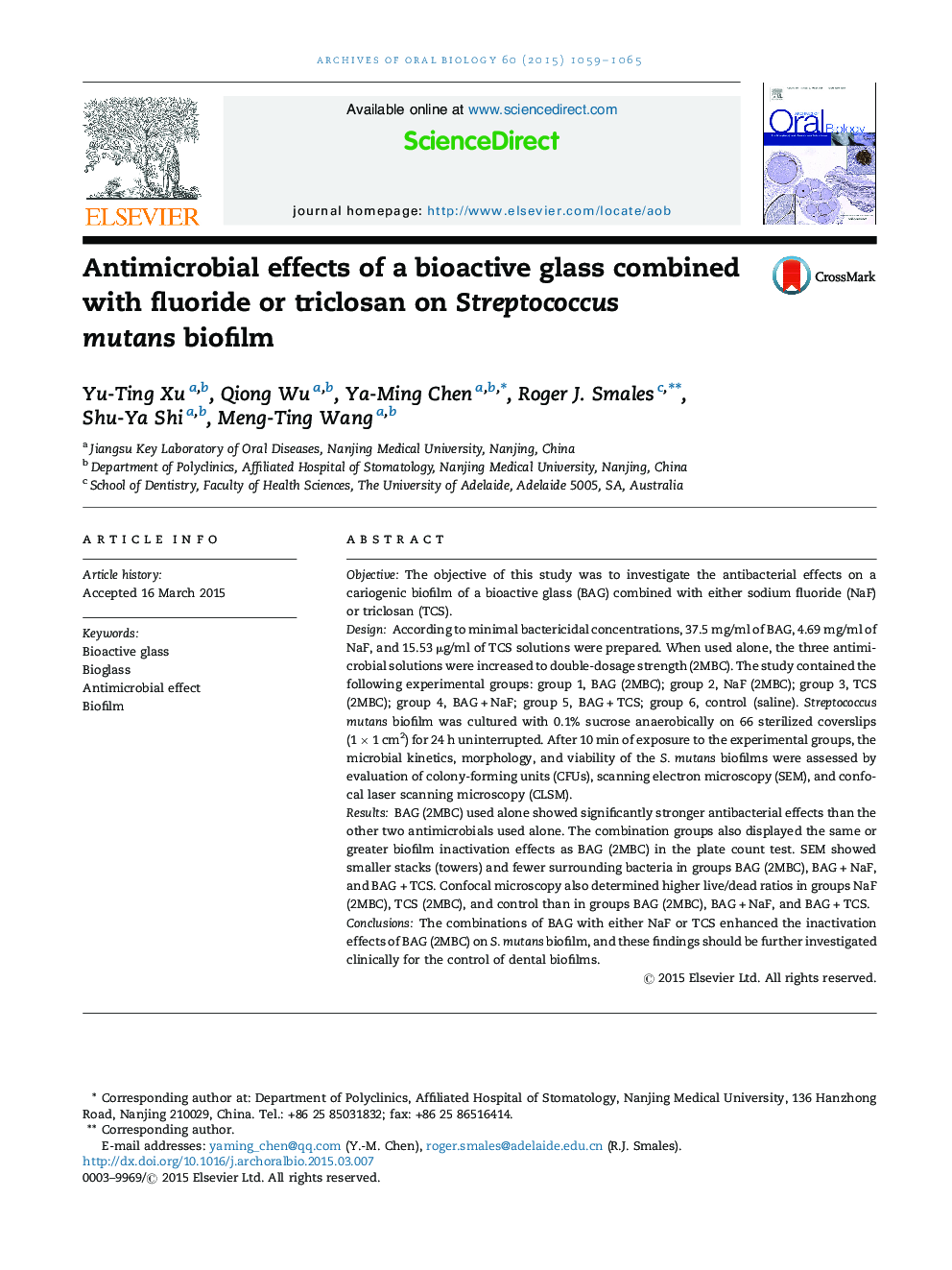| Article ID | Journal | Published Year | Pages | File Type |
|---|---|---|---|---|
| 3120815 | Archives of Oral Biology | 2015 | 7 Pages |
•In comparison with triclosan (TCS) and NaF, bioactive glass (BAG) has a strong antibacterial effect on biofilms.•BAG combined with either TCS or NaF exerts an addictive antibacterial effect.•In the inner biofilm, BAG and combinations displayed an enhanced inactivation effect.
ObjectiveThe objective of this study was to investigate the antibacterial effects on a cariogenic biofilm of a bioactive glass (BAG) combined with either sodium fluoride (NaF) or triclosan (TCS).DesignAccording to minimal bactericidal concentrations, 37.5 mg/ml of BAG, 4.69 mg/ml of NaF, and 15.53 μg/ml of TCS solutions were prepared. When used alone, the three antimicrobial solutions were increased to double-dosage strength (2MBC). The study contained the following experimental groups: group 1, BAG (2MBC); group 2, NaF (2MBC); group 3, TCS (2MBC); group 4, BAG + NaF; group 5, BAG + TCS; group 6, control (saline). Streptococcus mutans biofilm was cultured with 0.1% sucrose anaerobically on 66 sterilized coverslips (1 × 1 cm2) for 24 h uninterrupted. After 10 min of exposure to the experimental groups, the microbial kinetics, morphology, and viability of the S. mutans biofilms were assessed by evaluation of colony-forming units (CFUs), scanning electron microscopy (SEM), and confocal laser scanning microscopy (CLSM).ResultsBAG (2MBC) used alone showed significantly stronger antibacterial effects than the other two antimicrobials used alone. The combination groups also displayed the same or greater biofilm inactivation effects as BAG (2MBC) in the plate count test. SEM showed smaller stacks (towers) and fewer surrounding bacteria in groups BAG (2MBC), BAG + NaF, and BAG + TCS. Confocal microscopy also determined higher live/dead ratios in groups NaF (2MBC), TCS (2MBC), and control than in groups BAG (2MBC), BAG + NaF, and BAG + TCS.ConclusionsThe combinations of BAG with either NaF or TCS enhanced the inactivation effects of BAG (2MBC) on S. mutans biofilm, and these findings should be further investigated clinically for the control of dental biofilms.
